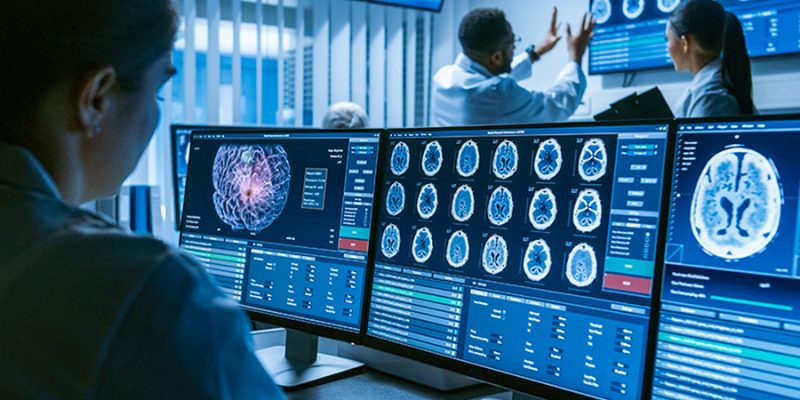
Artificial intelligence models that are driven by AI can detect someone’s race only by looking at their X-rays.
According to recent research, deep learning models powered by artificial intelligence can discern someone’s race merely from their X-rays, which is something a human doctor seeing the same photos would not be able to achieve. The results raise some unsettling concerns regarding the use of AI in medical diagnosis, evaluation, and therapy. Could computer software analyze photos like these with accidental racial bias?
A multinational team of health researchers from the US, Canada, and Taiwan tested their method on X-ray pictures that the computer program had never seen before after training it on hundreds of thousands of prior X-ray photos annotated with information about the patient’s race (and had no additional information about).
In yet another example of how AI can see things that humans fundamentally cannot, researchers have proven that AI may be able to discern race via X-ray images, despite there being no visible difference between them and human professionals. Using only X-ray and CT images, the AI could identify race with roughly 90% accuracy, and experts are mystified as to how it managed to do so.
The findings suggest that since AI may still be able to recognize photographs that are deemed to be anonymous, blurry, or otherwise deformed, great caution should be used when employing it in medical technologies. The finding can help medical staff in some ways, but it also raises the possibility that AI-based diagnostic systems may unintentionally produce racially biased results. For example, the system may automatically recommend a certain treatment for Black patients, regardless of whether it is appropriate for that patient. The individual’s physician would also be ignorant that the AI’s diagnosis was based on race information.
The increased melanin concentration of darker skin is detected by X-rays and CT scanners, which then incorporate this information in the digital image in a way that hasn’t been discovered, according to Ghassemi. Although the further study will be done on this, not everyone concurs with the theory.
In their recently released study, the researchers state that they “aimed to perform a thorough examination of the capacity of AI to determine a patient’s racial identification from medical photographs.” “We demonstrate that typical AI deep learning models can be taught across different imaging modalities to predict race from medical pictures with great performance, which was sustained under external validation settings.”
Even when the scans were acquired from individuals of the same age and sex, the AI was able to predict the patient’s claimed racial identification on these photos with startling accuracy. With some sets of photos, the system achieved values of 90%.
The work contributes to a growing corpus of research that demonstrates how frequently AI systems display human preconceptions and biases, such as racism, sexism, and other forms of prejudices. Skewed training data can lead to results that are significantly less useful.
This must be weighed against the enormous potential of artificial intelligence to handle data far more quickly than humans can, from disease detection techniques to climate change models. The study raises several unanswered questions, but for now, it’s important to be aware that racial bias may present itself in AI systems, especially if we’re going to give them more power in the future. Researchers may determine a person’s birthplace and upbringing by studying isotopes like oxygen, strontium, and sulfur found in human bones. They can discover signs of illnesses like osteoarthritis, trauma, and infections like leprosy and syphilis, providing them with information on the person’s living circumstances and way of life. Would the computer do just as well if it used someone’s geographic coordinates rather than their race? According to Goodman, the (AI) machine would do equally as well. As a result, while AI may be able to infer from an X-ray whether a person’s ancestors originated in Scandinavia, Africa, or Asia, Goodman insists that this is not a matter of race. Goodman referred to this as a geographical variety, albeit he acknowledged that it is uncertain.
This isn’t the first time artificial intelligence (AI) has astounded experts by recognizing race under seemingly hopeless circumstances; earlier research has demonstrated that it can do so even when the image is severely distorted or changed. The results are confusing, though, because covariables were removed. The researchers propose that the AI can recognize melanin variances between Black and White people’s skin that could be visible in CT and X-ray images but that humans have just never observed. But it is just one thought, and the real effort now starts with comprehending the outcomes. Regardless, the evidence should raise severe concerns regarding the application of AI in hospitals and how it may behave differently toward various racial groups, as has been repeatedly observed in the usage of AI.



















